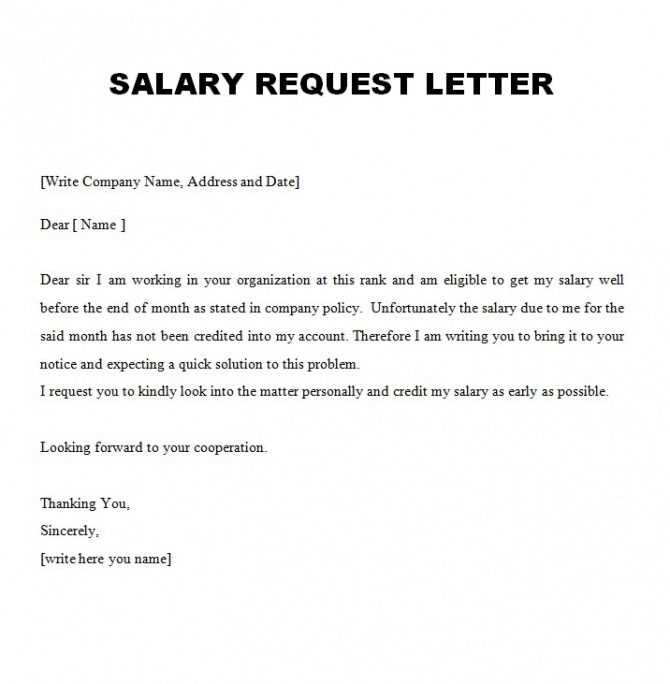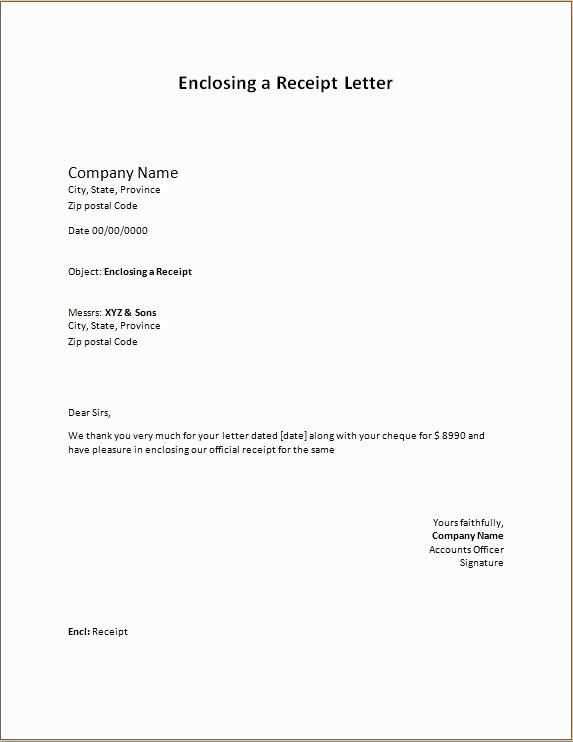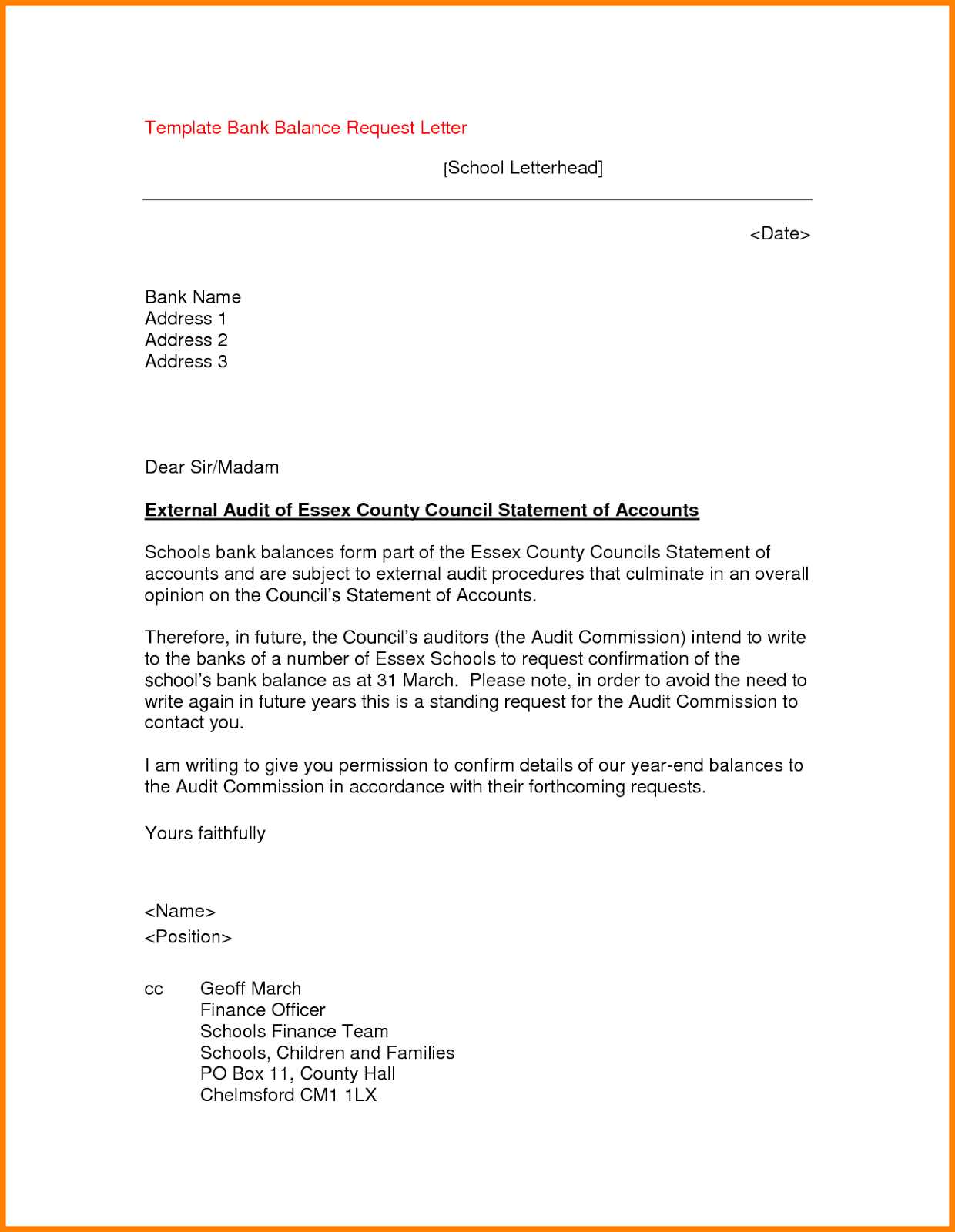Statement request letter template

For those who need to formally request a statement, a well-structured letter is key. A clear and direct request ensures the recipient understands your needs, making it easier to process your inquiry efficiently. A simple format works best, highlighting the purpose, necessary details, and any required actions from the recipient.
Start by addressing the recipient with their correct title and name, making sure to establish the reason for your request early in the letter. This helps them understand what information you need and why. Include any relevant details, such as dates, references, or specifics about the statement you’re seeking, to ensure clarity.
Conclude by offering appreciation for their time and assistance. A polite closing statement reinforces your professionalism and encourages a prompt response. Keep the tone friendly yet formal, and make sure the letter is concise and free of unnecessary information.
Here’s the updated version with minimized repetitions:
Begin by clearly stating the purpose of your request. Specify the details you need, ensuring that all necessary information is included. This helps avoid any unnecessary back-and-forth and speeds up the process.
Request Structure
- Introduction: Start with a brief greeting and introduce your request in a concise manner.
- Details: Include relevant dates, numbers, or references that will help clarify your request.
- Action: Clearly state the next steps, whether it’s a deadline, follow-up actions, or specific documents needed.
Effective Communication Tips
- Avoid redundancy by keeping sentences focused and to the point.
- Use bullet points or lists to break down complex information.
- Ensure clarity in every detail to avoid confusion or delays.
Conclude with a polite request for confirmation or follow-up action, depending on the situation. Make sure to thank the recipient for their time and cooperation.
- Statement Request Letter Template
To request a statement, it’s important to provide all necessary details clearly and concisely. Here’s a template you can use:
Subject: Request for Statement
Dear [Recipient’s Name],
I hope this message finds you well. I am writing to request a statement for [specific period or account]. The statement should include [mention any specific information you need, such as transactions, dates, or balances].
Please let me know if you require any further information to process this request. I look forward to your prompt response.
Thank you for your assistance.
Sincerely,
[Your Name]
[Your Contact Information]
Additional Notes
Make sure to personalize the template with the correct recipient details and any specifics related to your request. Always be clear about the time frame and the type of statement you’re asking for.
How to Structure Your Request Letter
Begin with a clear and concise subject line, indicating the purpose of your letter. This allows the reader to understand your request at a glance.
Next, address the recipient respectfully, using their proper title. If you’re unsure, a generic salutation like “Dear Sir/Madam” is suitable. After the greeting, introduce yourself briefly and explain your relationship to the recipient or the context in which the request is being made.
State Your Request Clearly
In the next paragraph, get straight to the point. Specify exactly what you’re asking for, using precise language. Avoid vague phrases; state the action you expect to be taken.
Explain the Reasoning Behind the Request
Provide a brief explanation of why your request is important or necessary. Be factual and clear about any supporting information that strengthens your case. Avoid unnecessary details, but provide enough context to help the reader understand the significance.
Conclude with a polite call to action, asking for a response or indicating the next steps. Express your appreciation for the recipient’s time and consideration.
Sign off with a professional closing such as “Sincerely” or “Best regards,” followed by your full name and contact details.
Focus on being direct and clear. Start with your request in the opening lines. Mention the specific statement you need and the reason for it. This keeps the tone polite but straightforward.
Identification Information
Include full names, addresses, and any other identifying details related to the request. This ensures there’s no confusion about who is asking for the statement and who will receive it.
Specific Request Details
Clearly state what you are requesting. Whether it’s a financial statement, payment history, or any other specific document, spell out exactly what you need. If applicable, mention the time period involved or any other relevant details.
Always include your contact information to allow for easy follow-up. End with a polite request for confirmation or action, such as asking for a response or a specific timeframe. Keep the tone formal, but friendly and professional.
Avoid vague language. Be clear and specific about what you’re asking for. Instead of saying, “I need your help with something,” provide detailed information, such as, “Could you provide me with the updated report by Friday?” This helps the recipient understand exactly what is expected.
Be Clear About Deadlines
Never assume the recipient knows when you need the task done. Always include a clear timeline. For example, if you need something urgently, specify, “Please send me the documents by 3 PM today.” Clear deadlines ensure the person understands the urgency.
Stay Polite and Professional
Don’t skip polite expressions like “please” or “thank you.” While you might be frustrated, maintaining a respectful tone is crucial for a positive response. A polite tone fosters cooperation and shows you value the recipient’s time and effort.
Best Practices for Addressing the Recipient
Begin by using the correct title and name of the recipient. If unsure about their preferred form of address, opt for a formal approach. For example, “Dear Mr. Smith” or “Dear Dr. Johnson” ensures a respectful tone. If the recipient’s gender is unclear, use their full name without any honorifics, such as “Dear Taylor Brown.” This avoids assumptions and maintains professionalism.
Use the Proper Salutation

Addressing someone with the proper salutation is crucial. If you are aware of the recipient’s title (e.g., CEO, Director), use it. When writing to a company or group, use “Dear [Company Name] Team” or “Dear Hiring Committee.” This shows an understanding of the recipient’s role or position.
Consider the Level of Formality

The formality of your salutation should match the relationship and context. For business correspondence, “Dear [Title] [Last Name]” is a safe choice. If you have an established relationship with the recipient, a more casual approach may be suitable, such as “Hello [First Name],” especially in creative or less formal industries.
Follow up within one to two weeks after sending your request letter. This is typically a reasonable timeframe for the recipient to process and respond to your inquiry. If you haven’t received any acknowledgment, a polite follow-up ensures your request hasn’t been overlooked.
If the request involves a time-sensitive matter, like a payment or confirmation, consider following up earlier–around 5-7 days after sending the letter. This ensures timely communication and avoids any delays in your process.
In case of legal or contractual requests, wait at least 10-14 days. It’s important to allow enough time for the recipient to address the matter properly, especially if they need to consult with others or review detailed information.
| Type of Request | Follow-Up Time |
|---|---|
| General inquiry | 1-2 weeks |
| Time-sensitive matter | 5-7 days |
| Legal/Contractual request | 10-14 days |
Requesting a statement should be clear and concise. Here are a few examples to guide you:
-
Example 1:
Dear [Recipient’s Name],
I hope this message finds you well. I am writing to request a detailed statement of my account for the period of [specific dates]. I would appreciate it if you could send me the statement at your earliest convenience.
Thank you for your assistance.
Best regards,
[Your Name]
-
Example 2:
Dear [Recipient’s Name],
I would like to request a statement of my [type of account, e.g., credit card, bank account] for the month of [specific month/year]. Please provide all relevant details, including transactions and any applicable fees.
Thank you in advance for your prompt attention to this matter.
Sincerely,
[Your Name]
-
Example 3:
Dear [Recipient’s Name],
I am requesting a copy of my statement for the last quarter, from [start date] to [end date], for my records. If there are any fees or discrepancies, please let me know.
I look forward to your response.
Best regards,
[Your Name]
Feel free to adjust these examples to fit your needs. Always remember to include necessary details like dates and account type for a smoother process.
Use bullet points to make your statement request letter clear and concise. This format helps to highlight key details and makes your letter easier to read. Start with the purpose of the letter, then outline the necessary actions and documents required. Be direct and avoid unnecessary details.
Clearly state the request at the beginning of the letter. If specific information is needed, list it as bullet points for quick reference. This ensures that the recipient understands exactly what is required from them.
End with a courteous closing that reinforces your request. Make sure to provide contact information in case the recipient needs to follow up or clarify details.